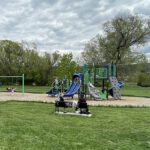Home »

A snapshot of housing and homelessness in Cranbrook
By Gwen Noble
Homelessness describes people without shelter as well as those who are insecurely housed in emergency shelters, housing that does not meet public health and safety standards or other temporary accommodations. It also includes families and individuals whose economic situation puts them at imminent risk of homelessness.
 Our local situation is this: More than one in five Cranbrook residents face extreme housing affordability problems, meaning more than 50% of their income goes toward rent. With record low vacancy rates of 1.8% and the loss of 300 rental units since the mid-1990s, Cranbrook’s rental situation has been rated as “poor” in B.C.’s Community Housing Index. A minimum of 125 additional housing units are needed to meet national occupancy standards in Cranbrook.
Our local situation is this: More than one in five Cranbrook residents face extreme housing affordability problems, meaning more than 50% of their income goes toward rent. With record low vacancy rates of 1.8% and the loss of 300 rental units since the mid-1990s, Cranbrook’s rental situation has been rated as “poor” in B.C.’s Community Housing Index. A minimum of 125 additional housing units are needed to meet national occupancy standards in Cranbrook.
With only an extreme weather emergency shelter open in winter months, Cranbrook lacks a permanent year-round homeless shelter, despite the continued efforts of a very committed group of local service providers and community members.
In 2014/15 the local Homeless Outreach Program met with 161 individuals who were completely homeless on first contact, another 265 at significant risk of becoming homeless, and 32 who became homeless as a result of crises in their living situations. Client intakes have increased by 14% over the last year. Local waiting lists for affordable housing are also growing as vacancy rates fall below two percent.
Opportunity does knock though. As well as the above mentioned emergency shelter committee and their continued efforts, Cranbrook is one of seven B.C. communities receiving provincial funding to increase innovation and sustainability in social and community service delivery.
Ending homelessness in Cranbrook is identified as a priority. The vision of ‘Keys to Home’ is one of community collaboration and partnership to ensure all individuals have access to a healthy, safe and affordable place to call home.
Many communities in Canada are now tackling homelessness using Housing First. It is a proven approach that saves costs by moving chronically homeless individuals or families into stable housing so they have the opportunity to stabilize their lives. Every $10 spent on housing support for chronically homeless individuals results in $21.72 savings in social services, health care, housing and involvement in the justice system (Canadian Mental Health Commission, 2014).
Twenty percent of the homeless population is defined as chronic and accounts for 60% of overall system costs. Housing First is based on the concept that a homeless individual or household’s first and primary need is to obtain stable housing, and that other issues that may affect the household can and should be addressed once housing is obtained. This approach enables service providers to shift from crisis management to supporting more innovative and responsive approaches that support long-term reductions in homelessness.
Housing First delivers benefits for the whole community, including: the chronically homeless, including families and youth, anyone at imminent risk of homelessness due to changes in economic or health status, improved public safety, coordination of homeless-serving community service and health care providers, and strengthening values of care, connection and dignity in the community.
All residents are invited to attend meetings to become involved.
Follow the Facebook page where meeting details will be posted.
– Gwen Noble is a member of the Poverty Reduction Committee; a standing committee of the Cranbrook Social Planning Society.







